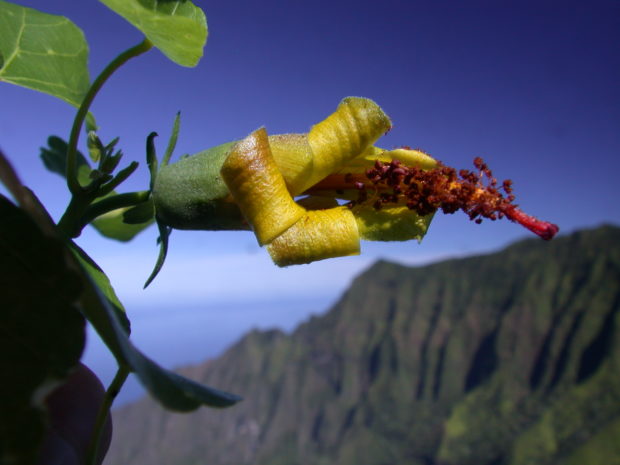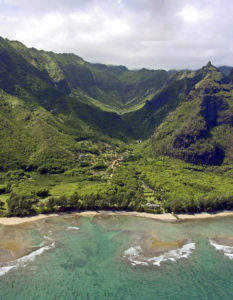We have much more to do and your continued support is needed now more than ever.
The Olympics of the Conservation World: Coming to Hawai‘i
Do not let anyone tell you that dreams do not come true – this is a story about a dream that came true and that can change the future for wildlife and the world.
It began in 2008 when thousands of people including national leaders and conservation practitioners from around the world gathered in Barcelona, Spain, to attend the IUCN’s World Conservation Congress (WWC). The International Union for Conservation of Nature (IUCN), based in Switzerland, is the world’s oldest and largest global environmental organization, with more than 1,200 government and NGO members and almost 11,000 volunteer experts in some 160 countries.


We knew in our hearts that Hawai‘i could inspire the world through our amazing biodiversity, our vibrant indigenous Hawaiian culture and the commitment of the conservation community to work together to develop some of the most cutting edge biocultural conservation programs on earth. Hawai‘i has been called the endangered species capital of the world, and for good reason. Nearly all of our native wildlife, from monk seals to hoary bats to sea turtles to forest birds are currently listed as threatened or endangered.
In short, we knew that holding a WCC in Hawai‘i could be a game changer – it could be an important factor in moving our planet away from rapidly approaching the tipping point, and instead slowly move towards a turning point that will take us to sustainability. The stakes are high and our children’s children depend on us to make this change. Our planet’s biodiversity is our life support system and it is being degraded and destroyed at the rate that is unsustainable!
“Having been born and raised in Hawai‘i I have seen first-hand the increasing endangerment of our unique biodiversity and the renaissance of our native Hawaiian culture. Islands are evolutionary engines that generate biocultural diversity but they are sensitive ecological systems that are often the first places to feel the impacts of development, invasive species and climate change. Hawai‘i is a microcosm of the issues the IUCN is dealing with around the world and we have developed innovative and collaborative programs to deal with these issues. ”
In time, the dream spread and many passionate people began to add their voices and talents to our cause. While I was the elected leader for this effort, it took an army of dedicated people from the national conservation, environmental and foundation community to pull it off including help from the National Wildlife Federation and their Hawai‘i state affiliate Conservation Council of Hawai‘i.

After many unsuccessful appeals to the US Department of State, it appeared that we had exhausted our options. With the determined insistence of former NWF board member Steven Montgomery, and fast action by NWF to mobilize fellow national conservation organizations, a sign on letter was produced at the 11th hour that helped to push the State Department to finally support and sign off on our bid to host.
Then, on May 21, 2014, to our amazement, and the amazement of many around the world, the IUCN Council voted unanimously to award the 2016 World Conservation Congress to Hawai‘i!
As we count down to September 1-10, 2016 when the world will meet in Hawai‘i, I encourage all NWF members, supporters and affiliates to consider how they can be part of this once-in-a-lifetime historic opportunity.
If you are an NWF affiliate or partner organization, consider joining as an IUCN member and send a delegation to the Congress. Your participation and support will help to ensure that the 2016 World Conservation Congress leaves a legacy that will change the world.
Leave a comment of support below!
 About the Author: Chipper Wichman is the President, Chief Executive Officer and Director of the National Tropical Botanical Garden. For the past 40 years, Chipper has worked at the National Tropical Botanical Garden (NTBG) where he has led efforts to preserve the precious natural and cultural resources of Hawai`i where he was born and raised. Some of Chipper’s many accomplishments include the creation of the award winning Limahuli Garden and Preserve on Kaua‘i, the restoration of Pi`ilanihale Heiau in Hana, the construction of a $15 million LEED Gold botanical research center at NTBG, and leading the effort to bring the IUCN World Conservation Congress to Hawaii in 2016.
About the Author: Chipper Wichman is the President, Chief Executive Officer and Director of the National Tropical Botanical Garden. For the past 40 years, Chipper has worked at the National Tropical Botanical Garden (NTBG) where he has led efforts to preserve the precious natural and cultural resources of Hawai`i where he was born and raised. Some of Chipper’s many accomplishments include the creation of the award winning Limahuli Garden and Preserve on Kaua‘i, the restoration of Pi`ilanihale Heiau in Hana, the construction of a $15 million LEED Gold botanical research center at NTBG, and leading the effort to bring the IUCN World Conservation Congress to Hawaii in 2016.





















